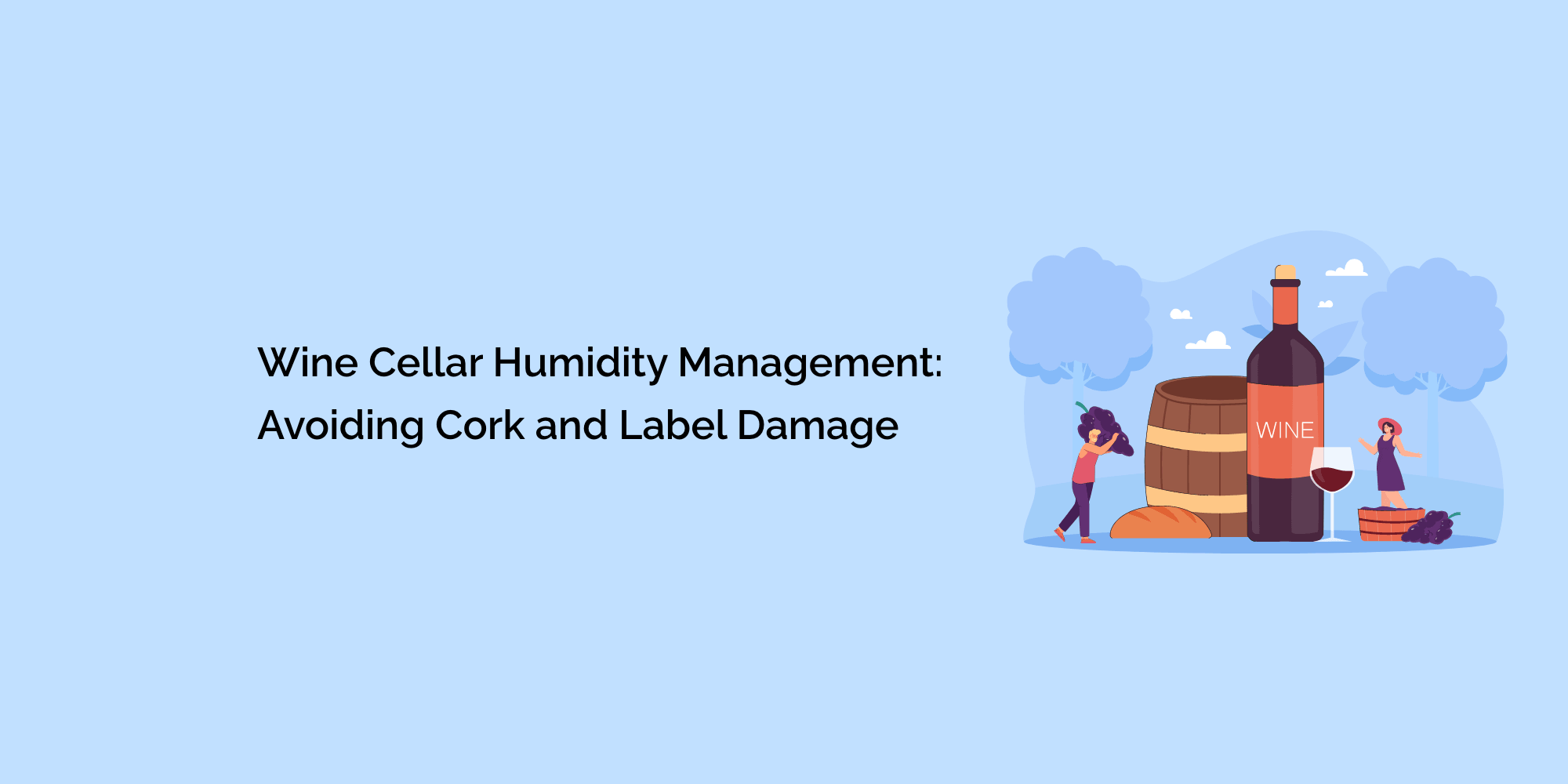A well-maintained wine cellar is a sanctuary for wine enthusiasts and collectors, preserving and aging their cherished bottles to perfection. While temperature is a critical aspect of wine preservation, humidity management is equally important for ensuring the longevity and quality of your valuable wine collection. The right humidity levels prevent cork drying and label damage, safeguarding the integrity of your wine and enhancing its investment value. In this comprehensive blog, we will delve into the significance of humidity management in wine cellars, the impact of humidity on cork and label preservation, and best practices to avoid potential damage to your prized wines.
Understanding the Importance of Humidity in Wine Cellars:
Humidity is a key factor in wine preservation for the following reasons:
-
Cork Preservation: Humidity levels directly impact the condition of wine corks. Proper humidity prevents corks from drying out and shrinking, maintaining an airtight seal and preventing oxygen from entering the bottle. This controlled oxidation contributes to the aging process, enhancing wine flavors.
-
Label Protection: Adequate humidity protects wine labels from damage caused by moisture or mold growth. Preserving label integrity is essential for historical significance and aesthetic appeal, especially for rare or collectible bottles.
-
Avoiding Wine Evaporation: Proper humidity levels minimize the evaporation of wine from bottles, ensuring the liquid volume remains stable and maintaining the wine's concentration.
-
Preventing Mold Formation: High humidity levels can promote mold growth, which not only damages labels but can also lead to cork taint and spoilage.
- Consistent Aging Conditions: Maintaining stable humidity levels ensures consistent aging conditions for all wine bottles, preventing discrepancies in the maturation process.
The Ideal Humidity Range for Wine Cellars:
The optimal humidity range for wine cellars is generally between 60% to 70%. Within this range, wines are protected from cork and label damage while aging gracefully. However, it is crucial to strike a balance, as excessively high humidity levels can lead to mold growth, while low humidity can cause corks to dry out.
Cork Drying and Wine Spoilage:
When corks dry out, they lose their elasticity and may shrink, leading to potential wine spoilage. Dry corks allow air to enter the bottle, causing oxidation that negatively impacts the wine's taste and aroma. Additionally, dry corks can also lead to a phenomenon known as "cork taint," where the wine acquires a musty, moldy, or off-putting taste.
Mold Growth and Label Damage:
Excessive humidity can create an environment conducive to mold growth. Mold can form on the wine bottle's label, leading to damage and potentially obscuring important information about the wine, such as the vintage or producer. Mold-infested labels can also diminish the overall visual appeal of the bottle, reducing its collectible value.
Best Practices for Humidity Management:
Proper humidity management is essential for the long-term preservation of your wine collection. Here are some best practices to avoid cork and label damage:
-
Climate Control Systems: Invest in a reliable climate control system that includes a humidification system. These systems help regulate humidity levels within the ideal range.
-
Hygrometer Installation: Install a hygrometer in the wine cellar to monitor humidity levels continuously. Hygrometers are instruments that measure and display humidity, helping you identify any fluctuations.
-
Humidifier Maintenance: Regularly inspect and maintain humidifiers to ensure they are functioning correctly and delivering the required amount of moisture.
-
Avoiding Condensation: Be cautious of excess condensation, as it can lead to mold growth. Proper cellar insulation can help prevent condensation from forming.
-
Dehumidifiers for Excess Humidity: If your cellar experiences consistently high humidity levels, consider using a dehumidifier to bring the levels down to the desired range.
-
Wine Rack Placement: Properly arrange wine racks to allow for adequate air circulation around the bottles, minimizing the risk of mold formation.
-
Avoiding Direct Sunlight: Sunlight exposure can elevate humidity levels and cause temperature fluctuations. Keep your wine cellar away from direct sunlight to maintain stable humidity conditions.
-
Regular Inspection: Regularly inspect your wine bottles and labels for any signs of mold growth or damage. Promptly address any issues to prevent further damage.
- Label Protection: To protect labels from mold or water damage, consider applying a thin layer of wax to the top of the cork and bottle neck. This practice is common among some collectors and wineries.
Wine Preservation and Investment Value:
A well-maintained wine cellar with proper humidity management enhances the preservation and investment value of your wine collection:
-
Ensuring Aging Potential: Maintaining the right humidity ensures that the wine's aging potential is preserved, allowing you to enjoy mature and well-developed flavors.
-
Investment Value: Properly aged wines often increase in value, making them valuable assets for collectors and investors.
-
Collectible Wines: Some wines, especially rare and collectible bottles, gain historical importance over time, making proper humidity preservation even more crucial.
- Family Heirlooms: Passed down through generations, aged wines become cherished family heirlooms, carrying memories and stories.
Conclusion:
Humidity management is a critical aspect of wine cellar maintenance, directly impacting the preservation and aging potential of your prized wine collection. Proper humidity levels protect corks from drying out and labels from damage, ensuring that each bottle reaches its full potential while preserving its investment value. By adopting best practices for humidity management and investing in a reliable climate control system, you can create an ideal aging environment for your wines, allowing you to savor the finest flavors and aromas that time has bestowed upon your cherished collection.








